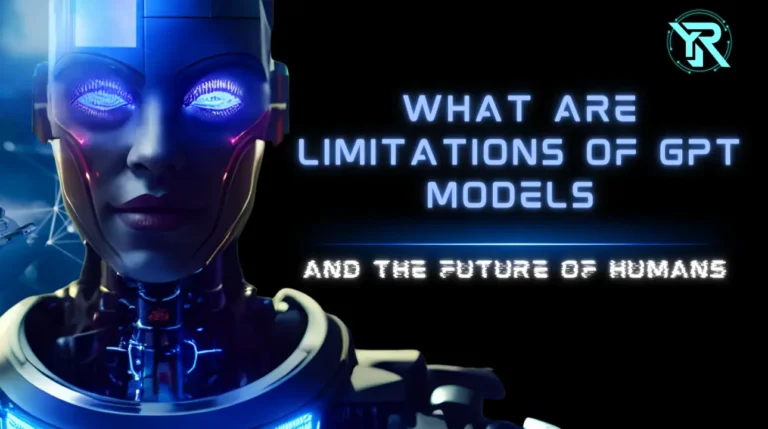Welcome to this article. Today we will talk about GPT (Generative Pre-trained Transformer) limitations of gpt models. GPT models have made great strides in the field of critical language processing, but their developments need to be accompanied by strong data.
A major concern is the bias present in the training data of GPT models, where GPT builders rely heavily on extensive data sets available from the internet. It is possible to worry about the scientific principles tied in the thread of independent world, which can be held responsible for economic loss or discrimination.
In addition, lack of interpretability is a major problem in the interpretation of GPT models. Due to their complex nature, their developers and experimenters face difficulties in understanding their internal mechanisms and decision-making processes. This darkness flickers, especially where wise decision-making is important, like health or finance, where light is a cornerstone of decision-making.
By reading further in our article, you will have deeper knowledge about many more limitations of GPT models. These are problems that every person who wants to contribute to AI technology needs to understand. Ultimately, by facing these challenges, we can collaboratively and consciously develop regulations and ethics for GPT and AI systems like it.
Table of Contents
What Is Bias In Training Data
Bias occurs in training data when we have unbalanced or partial data that over-represents a specific perspective or category. This means that in our pass data, some groups or topics have been given more focus while other groups or topics have been ignored.
When we use such biased data to train models like GPT, these models can also generate biased outputs.
Using biased training data can make AI systems make mistakes, and these mistakes can reinforce existing biases. Therefore, it is important to have balanced and diverse training data so that we can develop accurate and fair AI systems.
Interpretability Issues – Limitations of GPT Models
Now you will understand about “interpretability issues” of GPT models. When we talk about GPT models, a question arises that how understandable is their decision-making process. That is, how do these models take their decisions, and how clear is their internal mechanism.
As you can see, GPT models are quite complex. For this reason, understanding their internal mechanism becomes difficult not only for developers but also for users. This means that we do not know what kind of decisions GPT models are taking and what is their process.
This has become an issue of lack of transparency and clarity. Especially in critical fields like healthcare or finance, where transparent decision-making is very important, where understanding and accountability are essential.
Another problem is that if a mistake occurs in a GPT model, it becomes difficult to identify and correct it. This creates a potential risk, especially in situations where accurate and accountable AI decision-making is critical.
Therefore, it is very important to understand interpretability issues and deal with them in the right way. Therefore we can use GPT models in a responsible and ethical manner.
Limitations of GPT Models Memory Optimization
GPT models, i.e. Generative Pre-trained Transformer models, are very important in artificial intelligence. But they also have some problems, like their lack of memory optimization.
Memory optimization means how well GPT models use their memory. But sometimes these models use more memory, which can affect their performance.
To solve the problem of memory optimization of GPT models, we need to know some important things. The first thing is that whenever we train a GPT model, it requires a lot of data and resources. This excess of data and resources also hinders the use of their memory.
And then, after some time, when GPT models are implemented, there is also a problem with their memory optimization. Because they operate in real-time, these models can use more memory, which can reduce their speed and efficiency.
To solve these problems, human memory optimization techniques should be used. Just like humans want to prune their models, that means removing some special features that are not necessary. And then we should use quantization, so that we can optimize the memory of our models by reducing their parameters.
By solving memory optimization problems, we can improve GPT models. And when we solve this problem, we will help humans create even better artificial intelligence systems.
Main Limitations of GPT Models Hallucination
We’ve heard about (Limitations of GPT Models) GPT models, but did you know that their biggest problem is hallucinations? Well, let’s try to understand this problem.
Humans get to learn a lot through GPT models, but sometimes these models give ‘hallucinations’. Now you might be wondering, “What is hallucination?” Don’t worry, we will understand.
Hallucination means seeing something that is not actually there. In the case of GPT models, this problem arises when they give answers that are not true. Meaning, his answer is wrong, but it seems as if it is correct.
This problem arises when GPT models try to show their creativity. Sometimes he says these things which confuse us. This means that it is important for humans to understand their answers well, because they are not always right.
So, if you use GPT models, keep in mind that they may ‘hallucinate’ at times. After understanding this problem, humans should also be more careful while understanding their answers.
Main Limitation of GPT Models Revolutionization
Limitations of GPT models, i.e. Generative Pre-trained Transformer models, hold a special place in artificial intelligence. They are used in language processing, generating examples and in discussion. But, despite the features and improvements of GPT models, they suffer from one main limitation: the cause of the problem.
Here are the main limitations of GPT models:
- Availability and Quality of Data: Training GPT models requires large and diverse data sets. If this data is not obtained or its measurement is not correct, then the accuracy of the model is affected.
- Lack of Memory Optimization: Using GPT models requires more memory, which affects the expressivity.
- Bias and Discrimination: GPT models can express existing bias and discrimination, such as race, gender or other competitors.
- Lack of Interpretability: It can be difficult to understand the decision and production processes of GPT models, which can cause problems in testing their behavior.
Thus, by addressing the main limitations of GPT models, we can take steps towards improving them and making them more progressive.
What Is The Primary Goal of A Generative AI Model
The primary goal of generative AI models is to create novel and high-quality content in various domains, such as text, images, music, and more, that mimic human creativity. These models leverage large datasets to learn patterns and structures, enabling them to generate new content that has never been seen before or introduce novel variations to existing content.
Using techniques such as neural networks and probabilistic models, generative AI models can generate outputs that demonstrate creativity and originality.
A key aspect of generative AI is its ability to capture and replicate the essence of human creativity, which often surpasses traditional algorithmic approaches. These models can understand the subtle nuances of artistic styles, linguistic patterns, or musical compositions, allowing them to create content that resonates with human audiences on a deeper level.
This ability to generate diverse and captivating content opens up new avenues for artistic expression, storytelling and entertainment.
Furthermore, generative AI models play an important role in promoting innovation and exploration in various fields. They can generate new ideas, concepts and designs that challenge conventional thinking and inspire further creativity.
For example, in the field of design, generative AI can help architects create innovative building designs, or assist fashion designers in creating unique patterns and styles.
Overall, the primary objective of generative AI models is to push the boundaries of creativity, creating fresh and compelling content that enriches human experiences and drives innovation across various domains.
Conclusion – Limitation of GPT Models
The GPT model’s amazing powers have surely transformed the fields of artificial intelligence and natural language processing. Nevertheless, despite their advancements, memory optimization remains their primary limitation, which needs to be recognized and addressed.
One major obstacle to the efficiency and scalability of GPT models is their high memory requirements. To improve the usefulness and efficacy of the GPT model in a range of applications, this constraint must be addressed.
Researchers and developers can guarantee the future growth and influence of AI technology by concentrating on memory optimization. This will open up new avenues for advancements in the field.
FAQ : Limitations of GPT Models
Q: What are the limitations of GPT?
ANS: The following are some drawbacks of GPT (Generative Pre-trained Transformer) models:
Memory Optimization:
Interpretability:
Bias and Discrimination:
Lack of Factual Accuracy:
Computational Resources:
Q: Which is referred to as the main limitation of GPT models?
ANS: Memory optimization is frequently blamed for being the primary drawback of GPT (Generative Pre-trained Transformer) models. These models’ large memory requirements may prevent them from being as efficient, scalable, or practically applicable in real-world situations. Enhancing memory optimization is essential to improving GPT models’ usability and performance in a variety of applications.
Q: What are the limitations of OpenAI models?
ANS: Lack of Interpretability: Users may find it challenging to comprehend the reasoning behind specific decisions or outputs produced by OpenAI models, which undermines transparency and confidence.
Q: What is the main challenge that GPT models?
ANS: Memory optimization is the primary problem GPT models have to deal with. These models’ high memory requirements restrict their scalability and effectiveness in a range of applications. It is imperative that this challenge be addressed in order to improve the usability and efficacy of GPT models in practical applications.
Q: Are GPT models including ChatGPT known to have limitations?
ANS: It is true that GPT models—including ChatGPT—have known drawbacks. These constraints include the high computational resources needed for training, potential biases in generated outputs, interpretability issues, memory optimization challenges, and difficulties providing factual accuracy. These limitations, in spite of their remarkable capabilities, are crucial factors to take into account for their responsible and productive use in a variety of applications.

